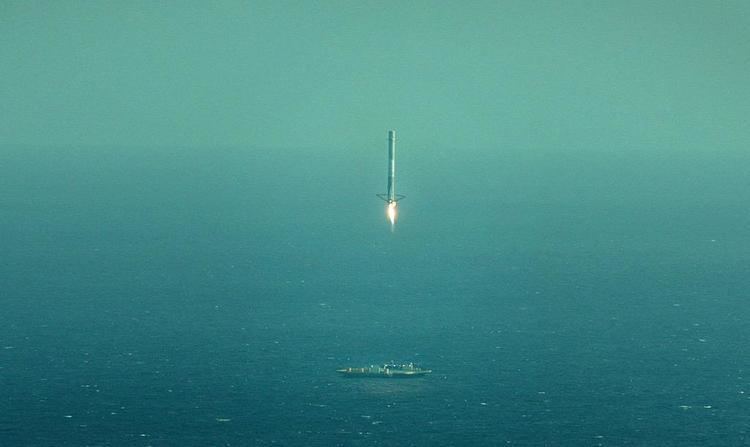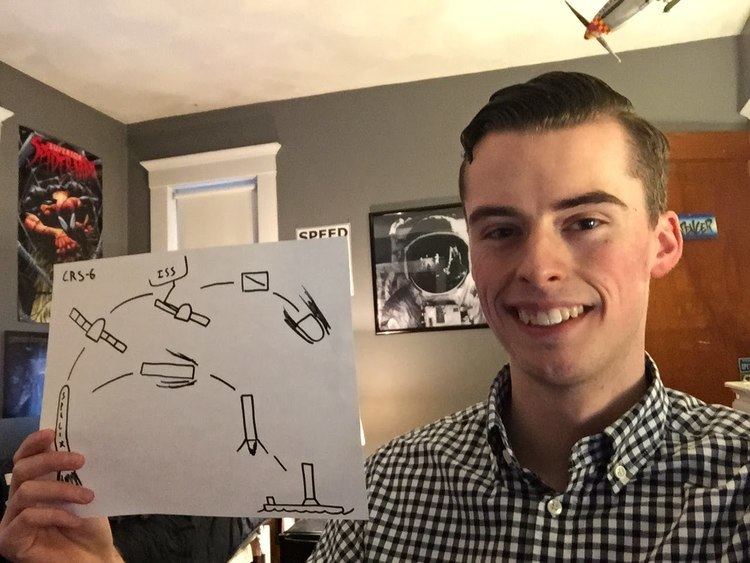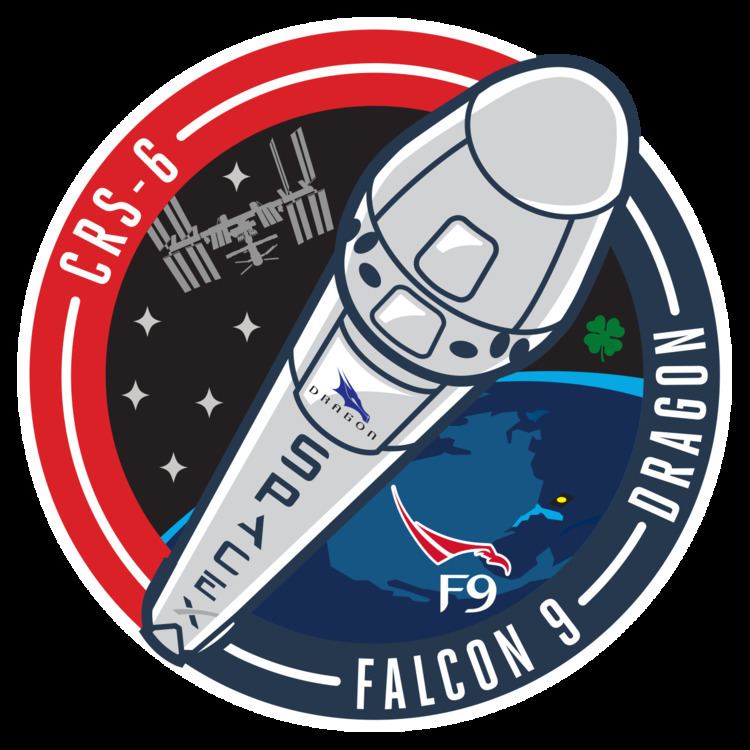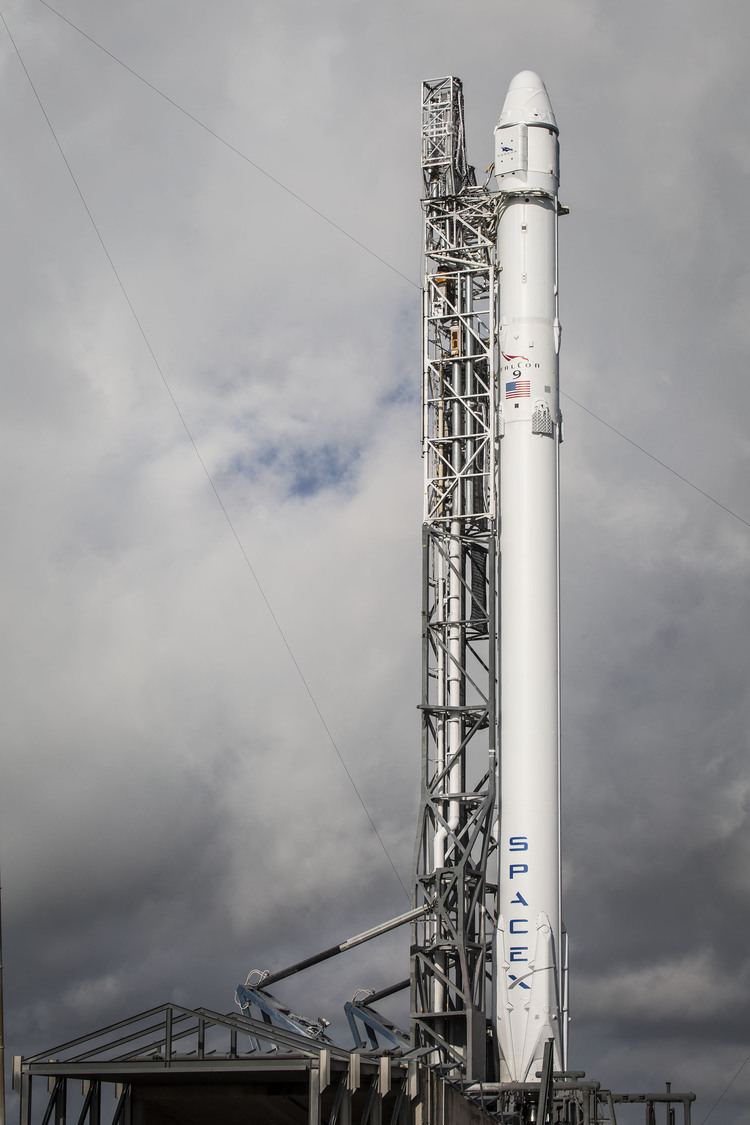Mission type ISS resupply SATCAT no. 40588 Dates 14 Apr 2015 – 21 May 2015 | COSPAR ID 2015-021A Period 1.5 hours | |
 | ||
Mission duration Planned: 1 monthElapsed: 36 days | ||
Spacex crs 6 launch
SpaceX CRS-6, also known as SpX-6, was a cargo resupply mission to the International Space Station, contracted to NASA. It was the eighth flight for SpaceX's uncrewed Dragon cargo spacecraft and the sixth SpaceX operational mission contracted to NASA under a Commercial Resupply Services contract. It was docked to the International Space Station from 17 April to 21 May 2015.
Contents
- Spacex crs 6 launch
- Spacex crs 6 barge landing attempt synchronized cameras with zoom closeup
- Launch history
- Primary payload
- Secondary payload
- Post launch flight test
- References

Spacex crs 6 barge landing attempt synchronized cameras with zoom closeup
Launch history

As of July 2014, the launch was tentatively scheduled by NASA for February 2015, with berthing to the station occurring two days later. However, as a result of delays in the launch of the previous SpaceX CRS-5 mission, CRS-6 launched on April 14, 2015. In late March 2015, the launch was tentatively scheduled for April 13, 2015, but was later postponed to April 14, 2015 due to weather conditions.

A Federal Communications Commission application submitted for temporary communication frequency authority notes the launch planning date as no earlier than April 8, 2015. The application also confirms communication uplinks for use with the first stage of this mission as it conducts another attempt at a first-ever propulsive landing on the Autonomous spaceport drone ship after staging.
Primary payload

NASA has contracted for the CRS-6 mission from SpaceX and therefore determines the primary payload, date/time of launch, and orbital parameters for the Dragon space capsule. The Dragon spacecraft was filled with 2015 kg (4,387 pounds) of supplies and payloads, including critical materials to directly support about 40 of the more than 250 science and research investigations that will occur during Expeditions 43 and 44.
Among other items on board,
Secondary payload
SpaceX has the primary control over manifesting, scheduling and loading secondary payloads. However, there are certain restrictions included in their contract with NASA that preclude specified hazards on the secondary payloads, and also require contract-specified probabilities of success and safety margins for any SpaceX reboosts of the secondary satellites once the Falcon 9 second stage has achieved its initial low-Earth orbit (LEO).
CRS-6 included science payloads for studying new ways to possibly counteract the microgravity-induced cell damage seen during spaceflight, the effects of microgravity on the most common cells in bones, gather new insight that could lead to treatments for osteoporosis and muscle wasting conditions, continue studies into astronaut vision changes and test a new material that could one day be used as a synthetic muscle for robotics explorers of the future. Also making the trip will be a new espresso machine for space station crews.
A part of this payload includes science experiments from high schools, such as a project from Ambassador High School in Torrance, California.
Post-launch flight test
After the separation of the second stage, SpaceX conducted a flight test and attempted to return the nearly-empty first stage of the Falcon 9 through the atmosphere and land it on a 90-by-50-meter (300 ft × 160 ft) floating platform called the autonomous spaceport drone ship. The unmanned rocket technically landed on the floating platform, however it came down with too much lateral velocity, tipped over, and was destroyed. Elon Musk later explained that the bipropellant valve was stuck, and therefore the control system could not react rapidly enough for a successful landing.
This was SpaceX's second attempt to land the booster on a floating platform after an earlier test landing attempt in January 2015 had to be abandoned due to weather conditions. The booster was fitted with a variety of technologies to facilitate the flight test, including grid fins and landing legs to facilitate the post-mission test. If successful, this would have been the first time in history that a rocket booster was returned to a vertical landing.
On 15 April, SpaceX released a video of the terminal phase of the descent, the landing, the tip over, and a small deflagration as the stage broke up on the deck of the ASDS.
